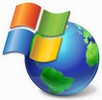 Since Windows XP, multilingual computing has become considerably easier to achieve. With the Ultimate and Enterprise versions of Windows Vista and Windows 7, you can choose from a wide variety of interface languages. This is especially useful for those whose native language is not yet available in an off-the-shelf copy of Windows. It is also useful for those who have an English language edition of Windows but want to be able to use the operating system in their own language.
Since Windows XP, multilingual computing has become considerably easier to achieve. With the Ultimate and Enterprise versions of Windows Vista and Windows 7, you can choose from a wide variety of interface languages. This is especially useful for those whose native language is not yet available in an off-the-shelf copy of Windows. It is also useful for those who have an English language edition of Windows but want to be able to use the operating system in their own language.
Multilingual user interfaces are also an essential in environments where there are different users of the same computers who need to work in different languages. This is made possible because you can install any number of interface languages you want. Each user account can have its own interface language. Different interface languages are also available for Microsoft Office. All of the language packs available for Windows are provided free for supported operating systems.
For Windows 7 and Windows Vista, there are two types of language packs available. The MUI (multilingual user interface) packs are available only for the Ultimate and Enterprise editions of these operating systems. They can be downloaded via Windows update as optional extras. There are 34 MUI language packs available for Windows 7. These are available for both 32-bit and 64-bit editions of Windows and will work with any original language of the copy of Windows that you have. The MUIs translate the vast majority of the Windows interface (including help files) into the target language.
The other type of language pack available is the LIP (language interface pack). These are smaller installation files for less common languages and they will work on any edition of Windows. They do, however, have specific requirements regarding the original language of your copy of Windows (usually English). LIPs only translate the more commonly used parts of the user interface. There are many LIPs available for more obscure languages from Armenian to Welsh.
Every user account can have its own language. To change the language for the user account that you are currently logged in on, simply go to the control panel and click the ‘Change display language’ link. In the classic start menu, this can be found in the ‘Keyboards and Languages’ tab when you double click on the ‘Region and Language’ icon. You can install or uninstall new languages from here as well as select the interface language from the ones available. For the language interface to change, you only need to log off and back on again. You do not need to restart the computer.
